|
|
 |
|
August 26, 2013
With the long Labor Day weekend just over the horizon, the end of the summer
grilling season draws near. That means it's time to take stock of the pantry and
make one last run to the market for your favorite grilling wines.
The options are many and the choices personal, but the one common denominator
all wine enthusiasts should pursue is affordability. A gathering around the
end-of-summer BBQ is typically casual, so I look for wines that will complement
casual dining, restricting my purchases to those that retail for $20 or less.
That doesn't mean I sacrifice flavor or quality; merely that I am after wines
that won't compromise my budget for the better cuts of meat and/or fish. My
personal suggestions follow:
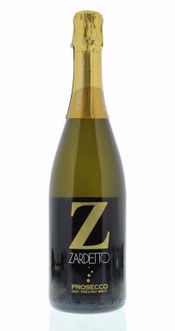 SPARKLING — There is a celebratory aspect to the Labor Day
weekend, so a bit of bubbly can help make the occasion special. To meet my
budget restrictions, I generally opt for either prosecco or cava. Prosecco DOC,
from Northern Italy not far from Venice, is light and easy on the palate and a
perfect companion to most things spicy. Ruffino Extra Dry ($15) is slightly
softer and sweeter than Zardetto Brut ($16), but both are fresh, clean and
delicious. For a slightly higher price, you might opt for Freixenet's Elyssia
Gran Cuvee Brut Cava ($20), from northeastern Spain. Korbel's Brut Rose ($11) is
a domestic crowd-pleaser that is very, very good for the price. Serve all of
these bubbles well chilled. SPARKLING — There is a celebratory aspect to the Labor Day
weekend, so a bit of bubbly can help make the occasion special. To meet my
budget restrictions, I generally opt for either prosecco or cava. Prosecco DOC,
from Northern Italy not far from Venice, is light and easy on the palate and a
perfect companion to most things spicy. Ruffino Extra Dry ($15) is slightly
softer and sweeter than Zardetto Brut ($16), but both are fresh, clean and
delicious. For a slightly higher price, you might opt for Freixenet's Elyssia
Gran Cuvee Brut Cava ($20), from northeastern Spain. Korbel's Brut Rose ($11) is
a domestic crowd-pleaser that is very, very good for the price. Serve all of
these bubbles well chilled.
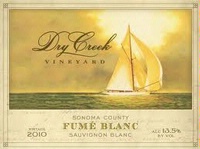 WHITE — For crisp and refreshing white wine on the domestic
side, two of the best value options available are the 2012 Kenwood Sauvignon
Blanc ($12) and the Dry Creek Vineyard 2012 Fume Blanc ($14), both sourced from
the Sonoma County AVA. Both wines exhibit a good deal of fresh citrus, with a
slightly herbal back note. These go well with grilled fish. WHITE — For crisp and refreshing white wine on the domestic
side, two of the best value options available are the 2012 Kenwood Sauvignon
Blanc ($12) and the Dry Creek Vineyard 2012 Fume Blanc ($14), both sourced from
the Sonoma County AVA. Both wines exhibit a good deal of fresh citrus, with a
slightly herbal back note. These go well with grilled fish.
If shellfish is on the menu, I love to pair an albarino, either the 2012 Paco
& Lola Albarino, Rias Baixas ($20) from Spain or Tangent's 2012 Albarino,
Paragon Vineyard ($17) from California's Edna Valley. With spicy dishes, the
Husch 2012 Gewurztraminer, Anderson Valley ($14) or the Robert Oatley 2011 Rose
of Sangiovese ($15) would be my first options. And if you must have a
chardonnay, at $16 the Francis Ford Coppola 2012 Diamond Collection Chardonnay,
Monterey, is well balanced, satisfying and unpretentiously priced.
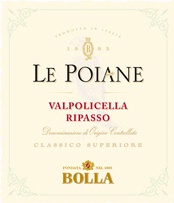 RED — This category is trickier than you might imagine, for the red
wines must have enough flavor and oomph to stand up to bold, smoky aromas from
the grill, but not to the extent they are heavy, leaden and overly tannic, which
won't play well on a warm day. My star red wine of the Labor Day show this year
is the Bolla 2010 Le Poiane Valpolicella Classico Superiore Ripasso, Italy
($15). The name of the wine is a mouthful, but so is the wine. It has richness
and character, but the primary grape (corvina) is not as meaty or as harsh and
mouth-puckering as, say, cabernet sauvignon. So it makes for a medium-bodied
wine that is easily consumed young. RED — This category is trickier than you might imagine, for the red
wines must have enough flavor and oomph to stand up to bold, smoky aromas from
the grill, but not to the extent they are heavy, leaden and overly tannic, which
won't play well on a warm day. My star red wine of the Labor Day show this year
is the Bolla 2010 Le Poiane Valpolicella Classico Superiore Ripasso, Italy
($15). The name of the wine is a mouthful, but so is the wine. It has richness
and character, but the primary grape (corvina) is not as meaty or as harsh and
mouth-puckering as, say, cabernet sauvignon. So it makes for a medium-bodied
wine that is easily consumed young.
This particular wine is made in the ripasso method common in the Veneto
region of Northern Italy, fermented on the skins of grapes used for the region's
big red, Amarone. On the domestic side, two California Zinfandels come quickly
to mind for the task of facing savory grilled meats: Alexander Valley 2010 Sin
Zin ($19.99) and Dry Creek Vineyard 2010 Heritage Zinfandel ($19).
And my best value red, Antano 2008 Rioja Reserva, Spain ($12) is an absolute
steal at the price. For those grilling salmon as well as meats and seeking a
crossover red, the Navarro 2011 Pinot Noir, Anderson Valley ($19) is as good as
any domestic pinot you are likely to find under $20.
Posted by Robert Whitley at 5:48 PM
|
|
August 19, 2013
With last month's Taste of the Critics Challenge in San Diego, I have completed a full cycle of public tastings of medal-winning wines from all three "Challenge" wine competitions under my direction. Besides Critics Challenge, the other two are the Winemaker Challenge and Sommelier Challenge.
As you might surmise, each is judged exclusively either by wine critics, sommeliers or winemakers. All three groups are highly skilled at wine evaluation, of course, so the wines that earn a medal are invariably quite good, although personal preference would likely dictate which winning wines a consumer might favor.
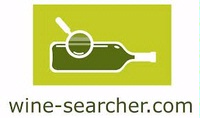 Given the overall quality of the wines presented at the public tastings, the mood of the assembled consumers is typically upbeat, with one notable exception. Many a wine enthusiast can get a little cranky when he/she falls in love with a medal-winning wine only to discover no one knows where the wine might be available for purchase. Given the overall quality of the wines presented at the public tastings, the mood of the assembled consumers is typically upbeat, with one notable exception. Many a wine enthusiast can get a little cranky when he/she falls in love with a medal-winning wine only to discover no one knows where the wine might be available for purchase.
Wine-Searcher has a solution for this nagging problem, and it is undoubtedly one of the most effective shopping tools ever concocted for wine.
Wine-Searcher has been around for some time and has long been a functional search engine for wine enthusiasts who know what they want. Type in a wine and the vintage and click search, and Wine-Searcher retrieves information from retail wine-sales outlets around the globe, including pricing and contact information.
For those who value the third-party endorsement that is conveyed through a wine-competition medal, there is a link to a Wine Awards page. Click the link, and the consumer is presented with a number of wine competition options.
If a wine lover wants to look for wines from the Critics Challenge, for example, he/she simply needs to click on the Critics Challenge link. That brings up a page briefly describing the wine competition, followed by several pages listing the winning wines.
To find a place where a winning wine might be purchased, simply click on the wine. That brings up an impressive list of retail locations and pricing from around the world. The beauty of this if a person lives in a state that allows wine shipments from out-of-state is that hard-to-find wines can be accessed in a way never before possible.
It's an especially valuable tool for anyone who lives in a rural location or smaller city where wine selection is somewhat limited.
For those who live in states that don't permit shipping, there's still a huge upside because Wine-Searcher will disclose the closest location where the wine in question can be purchased the old-fashioned way.
There is a benefit for the winning wineries, as well.
The objective for any winery that enters a wine competition is to earn an accolade that will boost sales. Because the Wine-Searcher shopping tool broadens every consumer's reach and gives winning wines greater exposure, it can't help but increase a winning winery's presence and propel sales.
As for myself, I am no longer at a loss when someone asks the inevitable question about a specific wine's availability. These days, I've got a pretty good answer.
Posted by Robert Whitley at 10:55 AM
|
|
August 14, 2013
Over the weekend in Paso Robles, the Eberle Winery team walked off with the Peoples' Choice trophy at the 15th annual Winemakers' Cookoff, staged at the fairgrounds in the prominent wine-growing community along California's vast Central Coast.
The event, put on by the Paso Robles Rotary, raises money for college scholarships for worthy Paso Robles high school seniors. The founding father of the cook-off, in which competing winery teams are charged with dreaming up and executing a winning dish on the grill, was none other than Gary Eberle of the Eberle Winery, and the Winemakers' Cookoff is but one more example of the gift of Gary.
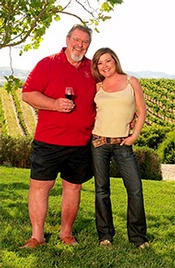 That gift is vision. Since its inception, the Winemakers' Cookoff has given away more than $400,000 toward college scholarships. It routinely attracts an enthusiastic crowd of 1,000 or more and is seen as an unqualified success. That gift is vision. Since its inception, the Winemakers' Cookoff has given away more than $400,000 toward college scholarships. It routinely attracts an enthusiastic crowd of 1,000 or more and is seen as an unqualified success.
So, too, the Eberle adventure in Paso Robles has been an unqualified success. Any reasonable person would put it down to Eberle's extraordinary vision. A native of Pittsburgh, Eberle had been a star football player at Penn State, where he did his undergrad work in the sciences. While working on his Ph.D at Louisiana State University, he fell in love with food and wine.
That led him on a lifetime detour, first to the University of California, Davis where he picked up a second Ph.D., this time in enology, then on to Paso Robles, where he founded the Estrella River Winery in 1973. Paso Robles at that time was something of a second-class citizen in the California wine industry. It was widely considered too hot and too remote, and most of the wine grapes grown in the region found their way into better wines as blenders, or jug wines.
Eberle planted the fashionable grapes of the day, cabernet sauvignon and chardonnay, but he also introduced syrah to the Paso Robles landscape for the first time. Syrah, we now know, thrives in the region and has helped make the area a shining star for those passionate about the so-called "Rhone" grape varieties such as syrah, viognier, grenache, marsanne and roussanne, which are prominent in France's Rhone Valley.
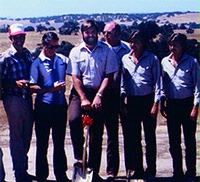 What we also know now, which no one understood or believed at the time of Eberle's arrival, is that Paso Robles is ideal for wine grapes. The days are warm, so the grapes have every opportunity to ripen perfectly, and the nights are cool, a key factor in the freshness and structure of wines from the Paso area. What we also know now, which no one understood or believed at the time of Eberle's arrival, is that Paso Robles is ideal for wine grapes. The days are warm, so the grapes have every opportunity to ripen perfectly, and the nights are cool, a key factor in the freshness and structure of wines from the Paso area.
Yet the success of the Rhone grape varieties in Paso Robles has hardly dampened Eberle's enthusiasm for his original conclusion that cabernet sauvignon and chardonnay would do well in Paso Robles. He planted plenty of both at the Eberle Winery (Estrella River was sold and remains today a "brand" rather than a small family-run winery) before it opened its doors along dusty Highway 46 in Paso in 1979.
"I would put up Paso Robles cabernet against Napa Valley cabernet any day," Eberle says with a bit of bravado that is inspired as much by his ire at a certain wine critic as it is his own experience.
The longtime critic for a major wine publication, who shall remain nameless, once doubted the potential longevity of an early Eberle cab.
"He said the Eberle cabernet sauvignon is nice, but it's too fruity, it will never last," Eberle recalled last week.
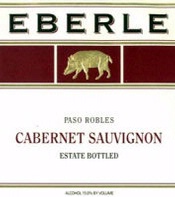 And with that Eberle retrieved a 1979 Estrella River Cabernet and a 1980 Eberle Winery Cabernet from the cellar. Both wines had good color and enticing aromas of leather, cigar box and spice. Though the primary fruits were nothing more than a memory, hints of dark fruit remained, and the tannins were sweet and smooth. Both wines were in excellent condition for their age and well worth exploring over a meal of tri-tip steak from a smoky barbecue. And with that Eberle retrieved a 1979 Estrella River Cabernet and a 1980 Eberle Winery Cabernet from the cellar. Both wines had good color and enticing aromas of leather, cigar box and spice. Though the primary fruits were nothing more than a memory, hints of dark fruit remained, and the tannins were sweet and smooth. Both wines were in excellent condition for their age and well worth exploring over a meal of tri-tip steak from a smoky barbecue.
"I don't know whether it's the cool nights or the soils or the clones or whatever, but these older Paso cabs seem to hold their color and structure forever," said Eberle as he savored the 1980. "Not bad for a Paso cab more than 30 years old."
Indeed, it could well be that winemaker Gary Eberle's greatest gift to Paso Robles has been the gift of cab.
Posted by Robert Whitley at 9:30 AM
|
|
August 6, 2013
When Judy Jordan founded J Vineyards & Winery in California’s Russian
River Valley in 1986, she had a very clear goal to produce sparkling wines that
would rival Champagne, the gold standard for the genre.
By that measure,
she and J have achieved a level of success many thought not possible. The
sparkling wines of J are elegant and stylish. They are among the finest made in
the New World and certainly on a par with many outstanding Champagnes. Yet
nearly 30 years into the ambitious project, Jordan and J are flirting with a new
direction.
There is the rapid expansion of its successful Pinot Gris
program on the horizon, and a nifty array of offerings such as Vin Gris made
from Pinot Noir, a delicious Pinot Meunier, and a growing selection of
Chardonnay and Pinot Noir. There’s even an unusual blend of Pinot Noir, Pinot
Meunier and Pinotage.
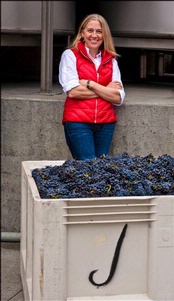 The goal is
to ramp up the Pinot Gris to as much as 100,000 cases annually within a few
years, and emphasize the table wines, primarily Chardonnay and Pinot Noir, that
can be made from grapes grown on J’s nearly 300 acres of vineyards in the
Russian River Valley. The goal is
to ramp up the Pinot Gris to as much as 100,000 cases annually within a few
years, and emphasize the table wines, primarily Chardonnay and Pinot Noir, that
can be made from grapes grown on J’s nearly 300 acres of vineyards in the
Russian River Valley.
It was no accident that J went out and hired
winemaker Melissa Stackhouse away from Jackson Family Wines a little more than
two years ago. Stackhouse was a Pinot Noir and Chardonnay specialist at Jackson
Family’s La Crema winery through 2010, when she was appointed winemaster to
oversee Pinot Noir production for all Jackson Family brands before accepting the
position at J.
That decision marked a turning point for J. It was a
signal that Jordan was conceding the obvious, acknowledging that domestic
sparkling wine, no matter how good, remains a tough sell when competing with
Champagne. Table wines made from the Chardonnay and Pinot Noir grapes that would
have gone into sparkling wine production can fetch the same price or more, and
gets to market sooner and is less costly to produce than high quality sparkling
wine.
“When the recession hit, our wine club kept us afloat,” said George
Rose, spokesperson for J. “The American consumer typically buys sparkling wine
once a year, and that’s around the holidays.”
The changes underway at J
don’t mean the winery will get out of the sparkling wine business, but it is a
clear signal that diversity is the new mantra. What separates J from neighbors
Gloria Ferrer and Domaine Carneros, both in the nearby Carneros region, is that
those two companies are backed by two titans of the industry. Gloria Ferrer is
owned by the Spanish wine company Freixenet, the largest sparkling-wine producer
in the world, and the French Champagne house Taittinger owns Domaine
Carneros.
The bet here is that J will continue to make dazzling sparkling
wines. But the day will likely come, and sooner rather than later, that it is
best-known for estate grown Russian River Valley Pinot and Chardonnay.
Posted by Robert Whitley at 10:57 AM
|
|
August 1, 2013
In a perfect world, we would spend our summer afternoons refreshing and reviving the palate with a glass or two of fine Champagne. The only problem with that picture is the bar tab. For many, Champagne is a luxury not to be indulged on a daily basis because the cost would be prohibitive.
There are numerous alternatives that are nearly as satisfying at a fraction of the cost. The following are but a few suggestions that may well help you stay cool through the dog days of summer without draining your wine budget.
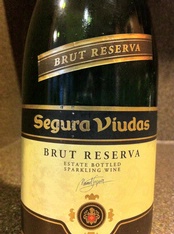 Cava: This is the top tier of sparkling wine from Spain and must be made using the “Champagne” method, with a second fermentation in the bottle, to be labeled Cava. Most Cava is produced in the Catalonia region of northeastern Spain from a variety of grapes, including macabeu, parellada and xarel-lo. The Spanish Cava producer Freixenet is in fact the largest sparkling-wine producer in the world. Cava tends to be lighter and less complex than Champagne, though there are exceptions. Most Cava retails for less than $20 a bottle, and much of it hovers in the $10 range. A well-made Cava will be crisp and refreshing. Cava: This is the top tier of sparkling wine from Spain and must be made using the “Champagne” method, with a second fermentation in the bottle, to be labeled Cava. Most Cava is produced in the Catalonia region of northeastern Spain from a variety of grapes, including macabeu, parellada and xarel-lo. The Spanish Cava producer Freixenet is in fact the largest sparkling-wine producer in the world. Cava tends to be lighter and less complex than Champagne, though there are exceptions. Most Cava retails for less than $20 a bottle, and much of it hovers in the $10 range. A well-made Cava will be crisp and refreshing.
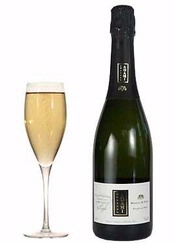 Prosecco: This Italian bubbly has enjoyed a renaissance of late and is growing in popularity in the United States due to both improved quality and tremendous value. Prosecco DOC is made in the Veneto and Friuli Venezia Giulia regions of northeastern Italy. The finest Prosecco is produced around the areas of Valdobbiadene and Conegliano. Style varies from brut to extra dry, extra dry being slightly sweeter. My two favorite producers are Bisol and Adami, which reside at the most expensive end of the Prosecco hierarchy. But Bolla and Ruffino both make delicious Prosecco that retails for less than $15. Prosecco: This Italian bubbly has enjoyed a renaissance of late and is growing in popularity in the United States due to both improved quality and tremendous value. Prosecco DOC is made in the Veneto and Friuli Venezia Giulia regions of northeastern Italy. The finest Prosecco is produced around the areas of Valdobbiadene and Conegliano. Style varies from brut to extra dry, extra dry being slightly sweeter. My two favorite producers are Bisol and Adami, which reside at the most expensive end of the Prosecco hierarchy. But Bolla and Ruffino both make delicious Prosecco that retails for less than $15.
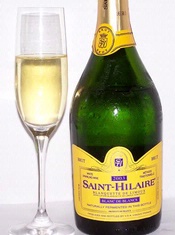 Blanquette de Limoux: There is considerable evidence that Limoux, in the Languedoc region in the south of France, was the birthplace of sparkling wine. Legend has it that Dom Perignon stopped to rest in at the Abbey Saint-Hilaire, near Limoux, as he made his pilgrimage to Santiago de Compestela. It was there that he found the monks making sparkling wine from the local mauzac grape. A second wine from the region, Cremant de Limoux, is made from chenin blanc and chardonnay grapes. The delicious Saint-Hilaire Blanquet retails for about $14. Blanquette de Limoux: There is considerable evidence that Limoux, in the Languedoc region in the south of France, was the birthplace of sparkling wine. Legend has it that Dom Perignon stopped to rest in at the Abbey Saint-Hilaire, near Limoux, as he made his pilgrimage to Santiago de Compestela. It was there that he found the monks making sparkling wine from the local mauzac grape. A second wine from the region, Cremant de Limoux, is made from chenin blanc and chardonnay grapes. The delicious Saint-Hilaire Blanquet retails for about $14.
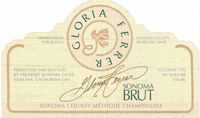 Domestic bubbly: Sparkling wine in the United States has improved dramatically as a category over the past decade, with quality bubbly now being made in upstate New York (Chateau Frank) and Long Island (Sparkling Pointe). While both are quite good, neither is cheap. So for value I would look to California, where the vast majority of domestic sparkling wine is produced. The top producers, of course, make wines that rival Champagne in price, but also do a very good job at the entry level. Two that are reliably good and fairly priced are Mumm Napa Valley Brut Prestige ($18 average price at Wine-Searcher.com) and Gloria Ferrer Brut ($17 average price). And if those prices are even a bit too steep for everyday sipping, the Korbel Brut Rose ($10 average price) is one of the best at that price point. Domestic bubbly: Sparkling wine in the United States has improved dramatically as a category over the past decade, with quality bubbly now being made in upstate New York (Chateau Frank) and Long Island (Sparkling Pointe). While both are quite good, neither is cheap. So for value I would look to California, where the vast majority of domestic sparkling wine is produced. The top producers, of course, make wines that rival Champagne in price, but also do a very good job at the entry level. Two that are reliably good and fairly priced are Mumm Napa Valley Brut Prestige ($18 average price at Wine-Searcher.com) and Gloria Ferrer Brut ($17 average price). And if those prices are even a bit too steep for everyday sipping, the Korbel Brut Rose ($10 average price) is one of the best at that price point.
Posted by Robert Whitley at 12:12 PM
|
|
 |
|